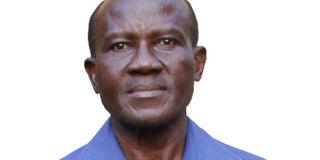Does Mr Museveni have the technical sharpness for 2021?

I have already noted that the reckless decisions by President Museveni and his NRM in recent times have probably contributed to the rise in politically motivated violence.
Then, last Sunday, I suggested that the speed at which Mr Museveni tackles fundamental problems is far below that expected in our times.
Today, I am wondering whether his grasp of technical things is good enough for Uganda-2021 and beyond, especially since he preaches so much about the wonders that science and the acquisition of technical skills can do in the creation of jobs.
Now, Ugandans are very fascinated by cars. So, when some fellows at Makerere University’s engineering department cobbled together a couple of crude cars and a bus powered by electric motors, President Museveni took a ride; both literally, and in a manner of speaking.
They somehow persuaded him – or President Museveni volunteered to be duped – that these contraptions were going to end up on industrial production lines, employing thousands of Ugandans.
During his recent speeches to the nation, President Museveni mentioned these machines again.
Clearly, left to himself, the President will not appreciate that designing, developing and manufacturing modern cars is not like a sanitary-pad or yogurt cottage industry fairy tale, and that Uganda just does not have the tools, expertise and multi-faceted industrial base, let alone a mass market, to make Makerere’s electric vehicles a realistic investment target.
Although commendable as student practical/hobby projects, it is unknowledgeable government officials and a timid media who continue citing them as serious economic ventures.
Way back in 2008, South Africa’s Optimal Energy had developed (to a very high standard) the Joule Electric Vehicle, which showed up at the Paris and Geneva automotive shows.
A roll call of the Optimal Energy team included: Kobus Meiring, who had earlier managed the Rooivalk attack helicopter project, and Mike Lomberg, a former Denel test pilot and business manager of the Southern African Large Telescope (SALT).
There was also Jian Swiegers, the primary mirror system manager on the SALT project. There was Gerhard Swart, the weapons systems engineer for Rooivalk and systems engineer on SALT. And the styling was by Keith Helfet, who had been the design chief at Jaguar.
The South African government had invested $27 million in the Joule’s development. Many other institutions had participated.
Between 2008 and 2012, Optimal Energy built four roadworthy prototypes, which largely met stringent European standards. But no investor was willing (or mad enough!) to drop a very modest $650 million into production of the car. JouleEV was ‘buried’ in 2012.
KiiraEV, Kayoola et al can of course be towed to a museum, a very dignified graveyard, but not to production lines.
The same technical innocence is evident when the President talks about CCTV cameras, almost elevating these tools to a cure for all serious crime.
It is fairly easy for a dedicated security outfit to use CCTV footage to catch candy and underwear thieves in a supermarket. Capturing and resolving the images of helmeted and otherwise disguised professional assassins on the move is a different ball game. Mistaken arrests will abound, and prosecutions will fail, unless crime scene forensic expertise and all-round security and law enforcement standards are raised.
Do rulers have to be ‘technical’?
No!
The problem comes when the ruler fails to nurture the relevant institutions as a total concept, arrogating himself some of their roles and exposing himself to undue embarrassment.
This technical deficit is another thing that makes President Museveni a weak candidate for re-election in 2021.
Mr Tacca is a novelist, socio-political commentator.
[email protected]




